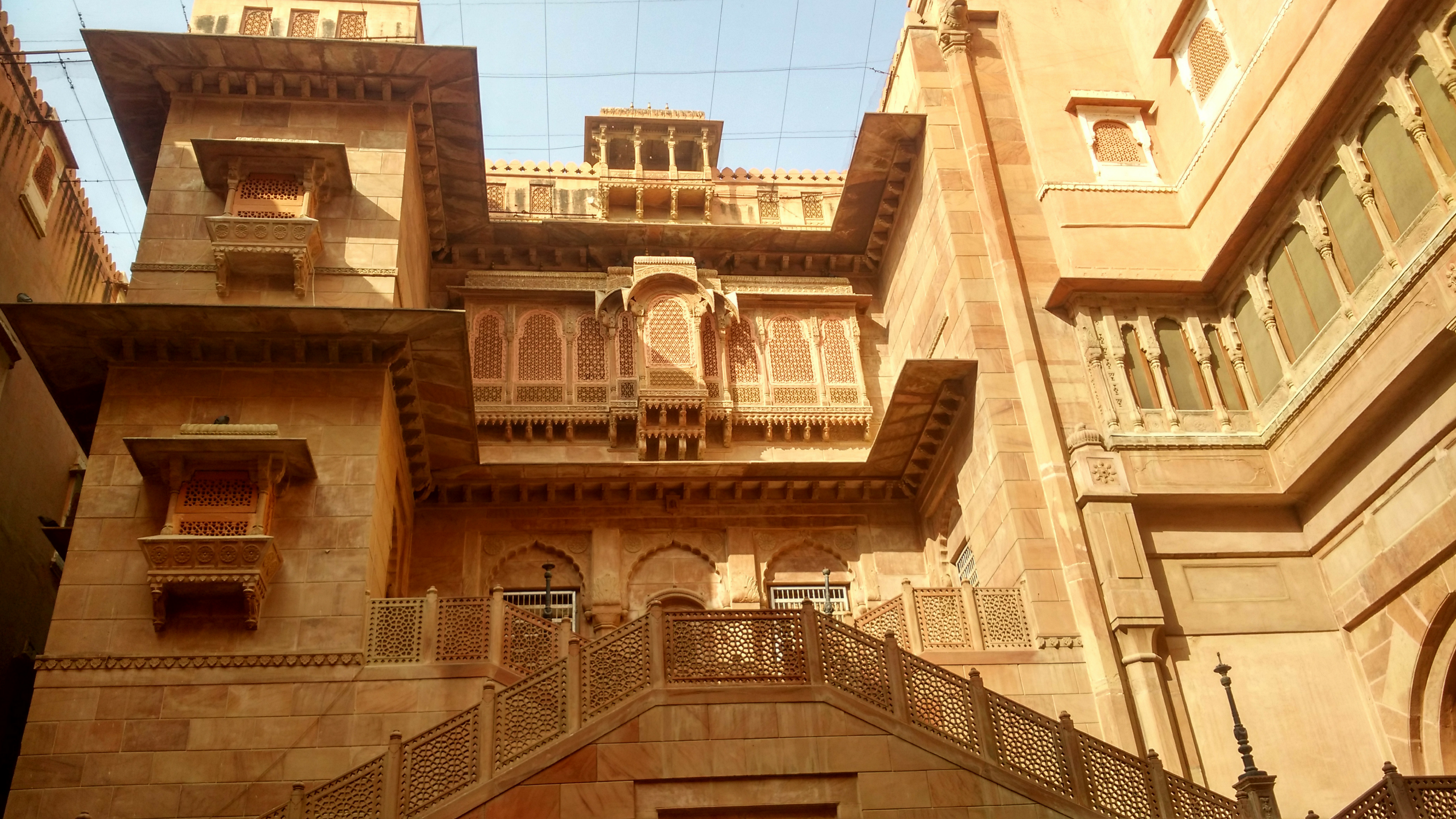#EPISODE: 4-1
JUNAGARH FORT
This post is about Junagarh fort. It is one among the places to visit in Bikaner, Rajasthan.

Junagarh fort was originally called as “Chintamani”, 5.28 hectares in area. Rao Bika built this fort in 1478.

Chintamani was constructed using Rajput architecture with red sandstones and marbles.



In Junagarh Palace, men and women celebrated Holi separately, as the queen and the royal women should not be seen by men.

The paintings on the white marble indicate that the King of Bikaner is the one who brought Current through coal, water, Railways for the first time in this city.

The empire belongs to the Sun family, so they have a separate chamber for Sun God with seven horse for worshipping.

This palace is has many sections called “Mahals”. Some of them are :
- Anoop Mahal
- Phool Mahal
- Chandra Mahal
- Ganga Mahal
- Badal Mahal
- Karan Mahal
PHOOL MAHAL:
Phool Mahal is one of the oldest section of the fort built by Raja Rai Singh. It is called “FLOWER PALACE” as Phool means “the flower” in Hindi.

Inside the Phool Mahal, there is a “Jhoola“, which means Swing for the God Krishna. This jhoola is made up of wood and mirrors are embossed in it. As the swing moved too and fro, the candlelight reflects in the mirror and gives the twinkling effect.

Veena is the oldest traditional musical instrument of India that is kept inside the Phool Mahal

BADAL MAHAL:
Badal Mahal is interesting place because of the Paintings on the wall. The wall inside the mahal portraits the monsoon with thunder and rainfall, as the people do not witness monsoon often.

KARAN MAHAL:
The Public audience hall is present inside Karan Mahal. Junagarh palace also had some temples and Havelis. Havelis are the mansion or the private space of the rich people.

These sections are divided by several gates in the fort. Some of them are :
- Karan Pol: This is the entry gate that is facing east.
- Suraj Pol: This is called “the sun gate” which is the entry gate.
- Daulat Gate: This gate consists of the Hand impression of the Royal Queens, (the wives of Bika) who committed “Sati”.
- Chand Pol: This is the double gate also called “the moon gate”
- Fateh Pol: It leads to the fort museum.
- Tripolia Gate: This is the three gates which has the sharp iron needle like spikes to prevent the elephant ramming during the battles.

In this fort, one of the room had this 70 kg (approx) pure silver door that provided added attraction to the luxury of the fort. It is now maintained inside the glass box.

Each room in the fort has a beautifully painted doors. Overall it looked colourful and attractive.

ANOOP MAHAL:
The King’s Private audience hall is present inside the Anoop Mahal. This hall is made up of Gold and mirrors which will glitter when the sunlight falls on it.

The first 3D painting of Bikaner is displayed in the fort. This is the 450 years old 3D painting of Bikaner.

King’s room has small bed compared to the King’s height, in order to prevent the enemies attack while sleeping. If the bed is bigger then the enemies will navigate and hide under the bed. They will attack when the King is asleep.

The fully covered Queen’s palace is at the last end of the palace. Men were not allowed here except the King.

FORT MUSEUM
GANGA MAHAL:
Ganga Mahal is now converted into fort museum. This museum exhibits various weapons, chariots for public views.

By the time of King’s period, one of the strange entertainment is dancing over the sharp knives and weapons. Henceforth, this particular type of dance still exists in some parts of India.

The British gifted the plane to Raja Karan Singh as the tribute to their participation in the war.

The different chariots used by the King and Queen also displayed in the museum.


The museum has different weapons used by the army of Bikaner in the battles.


The fort museum also exhibits the sandalwood throne of Rathore Emperors for public views.

Furthermore, the other sections of Junagarh fort has the elephant camp, horse stables, gardens havelies, temples, etc.,

In case, if you missed reading about explorations in Bikaner, then click here: Bikaner


One thought on “JUNAGARH FORT”